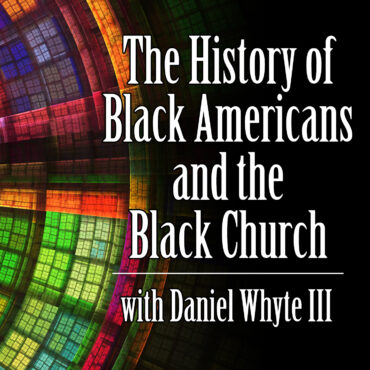
The Religion of the Slaves: The Loss of Social Cohesion
Our Scripture verse for today is Genesis 41:41-43 which reads: “And Pharaoh said unto Joseph, See, I have set thee over all the land of Egypt. And Pharaoh took off […]
 play_arrow
play_arrow
 play_arrow
play_arrow
 play_arrow
play_arrow
 play_arrow
play_arrow
Morning Maddhouse: Monday Maddhouse ReCap (11/03/25) podcast
 play_arrow
play_arrow
S E1295: In Class with Carr, Ep. 295: “Day of the Trick” podcast
 play_arrow
play_arrow
Eric Adams Uncensored : The FINAL Interview of NYC’s Defiant Mayor podcast
 play_arrow
play_arrow
Lisa Nichols: “Your Future is an Intention and a Thought Away.” podcast
 play_arrow
play_arrow
 play_arrow
play_arrow
 play_arrow
play_arrow
Open Your Political Mind Featuring Les Leopold, Veronica Cardenas and John Bonifaz podcast

Our Scripture verse for today is Isaiah 53:5 which reads: “But he was wounded for our transgressions, he was bruised for our iniquities: the chastisement of our peace was upon him; and with his stripes we are healed.”
Our BA and BC quote for today is from civil rights activist, Ralph David Abernathy. He said, “Christians should be ready for a change because Jesus was the greatest changer in history.”
In this podcast, we will be using as our texts From Slavery to Freedom, by John Hope Franklin, The Negro Church in America/The Black Church Since Frazier by E. Franklin Frazier and C. Eric Lincoln, and The Black Church In The U.S. by William A. Banks.
Let’s begin with John Hope Franklin’s book, From Slavery to Freedom, on the Christian influence on Africa amid the early European slave trade. He writes:
Doubtless, some Africans who were sold to the east and north during the period of Muslim domination found their way into the markets of Western Europe. It was not until the end of the fourteenth century, however, that Europeans themselves began to bring slaves into Europe. Both Spanish and Portuguese sailors were exploring the coast of Africa in the wake of the great wave of expansionism that had swept over Europe. They went to the Canary Islands and to innumerable ports on the mainland as far as the Gulf of Guinea. They took Africans to Europe and made servants of them, feeling justified in doing so because Africans would thereby have the opportunity to cast off their heathenism and embrace the Christian religion. By the middle of the fifteenth century, Europeans were selling in their home markets many African commodities, among them nuts, fruit, olive oil, gold, and slaves. Within a very few years, the slave trade became an accepted and profitable part of European commerce. Largely under the encouragement of Prince Henry, the sailors and merchants of Portugal early saw the economic advantages that the African slave trade afforded. By the time of his death in 1460, 700 or 800 slaves were being transported to Portugal annually.
The last half of the fifteenth century may be considered the years of preparation in the history of the slave trade. Europeans, mainly Spaniards and Portuguese, were establishing orderly trade relations with Africans and were erecting forts and trading posts from which to carry on their business. It was the period in which Europeans were becoming accustomed to having black Africans do their work and were exploring the possibilities of finding new tasks for them. Europeans were attempting to settle among themselves the question of who should and who should not engage in the traffic, and the mad scramble for monopoly even before the close of the century is indicative of the importance with which that traffic was regarded. Finally, this was the period in which Europeans developed a rationalization for their deeds based on Christianity. The Portuguese and the Spaniards led Europeans in invoking the missionary zeal of Christianity to justify their activities on the African coast. If they were chaining Africans together for the purpose of consigning them to a lifetime of enforced servitude, it was a “holy cause” in which they had the blessings of both their king and their church.
Now, our main topic for today is titled, “The Religion of the Slaves: The Christian Religion Provides a New Basis of Social Cohesion”. Frazier writes:
It is our position that it was not what remained of African culture or African religious experience but the Christian religion that provided the new basis of social cohesion. It follows then that in order to understand the religion of the slaves, one must study the influence of Christianity in creating solidarity among a people who lacked social cohesion and a structured social life.
From the beginning of the importation of slaves into the colonies, Negroes received Christian baptism. The initial opposition to the christening of Negroes gradually disappeared when laws made it clear that slaves did not become free through the acceptance of the Christian faith and baptism. Although slaves were regularly baptized and taken into the Anglican church during the seventeenth century, it was not until the opening of the eighteenth century that a systematic attempt was made on the part of the Church of England to Christianize Negroes in America. This missionary effort was carried out by the Society for the Propagation of the Gospel in Foreign Parts which was chartered in England in 1701. When the Indians in South Carolina proved to be so hostile to the first missionary sent out by the Society, he turned his attention to Negro and Indian slaves.
Unfortunately, we do not possess very detailed records on the religious behavior of the Negroes who became converts to Christianity through the missionary efforts of the Society, nor did the missionaries who worked under the auspices of the Moravians, Quakers, Presbyterians, and Catholics leave illuminating accounts of the response of the Negro slaves to the Gospel.

Our Scripture verse for today is Genesis 41:41-43 which reads: “And Pharaoh said unto Joseph, See, I have set thee over all the land of Egypt. And Pharaoh took off […]


Copyright Blackpodcasting 2025